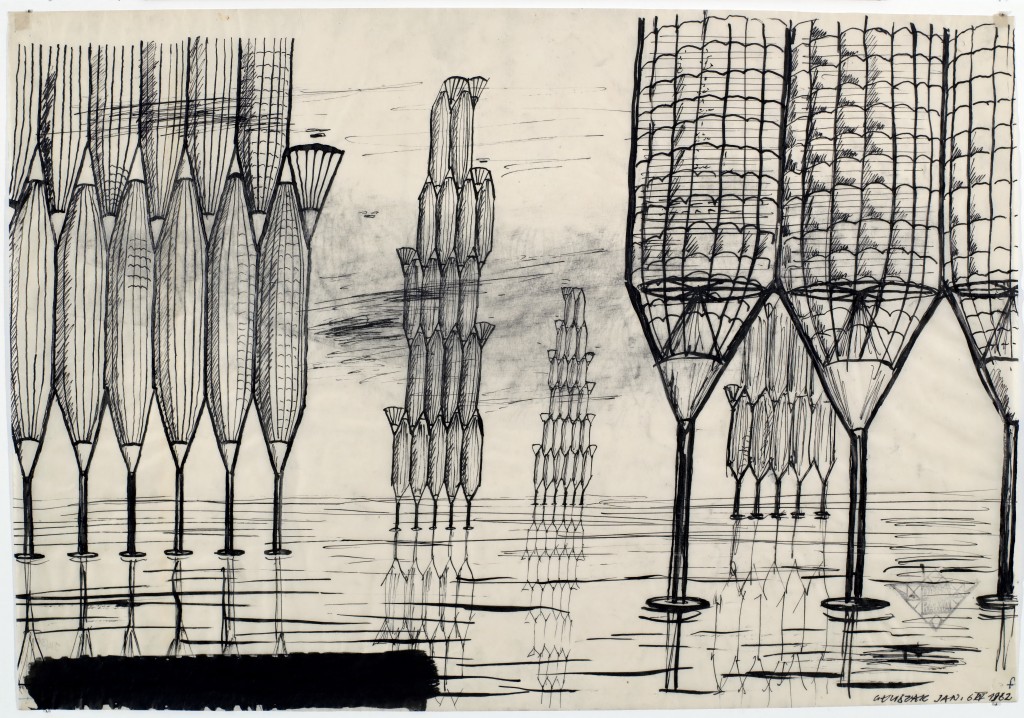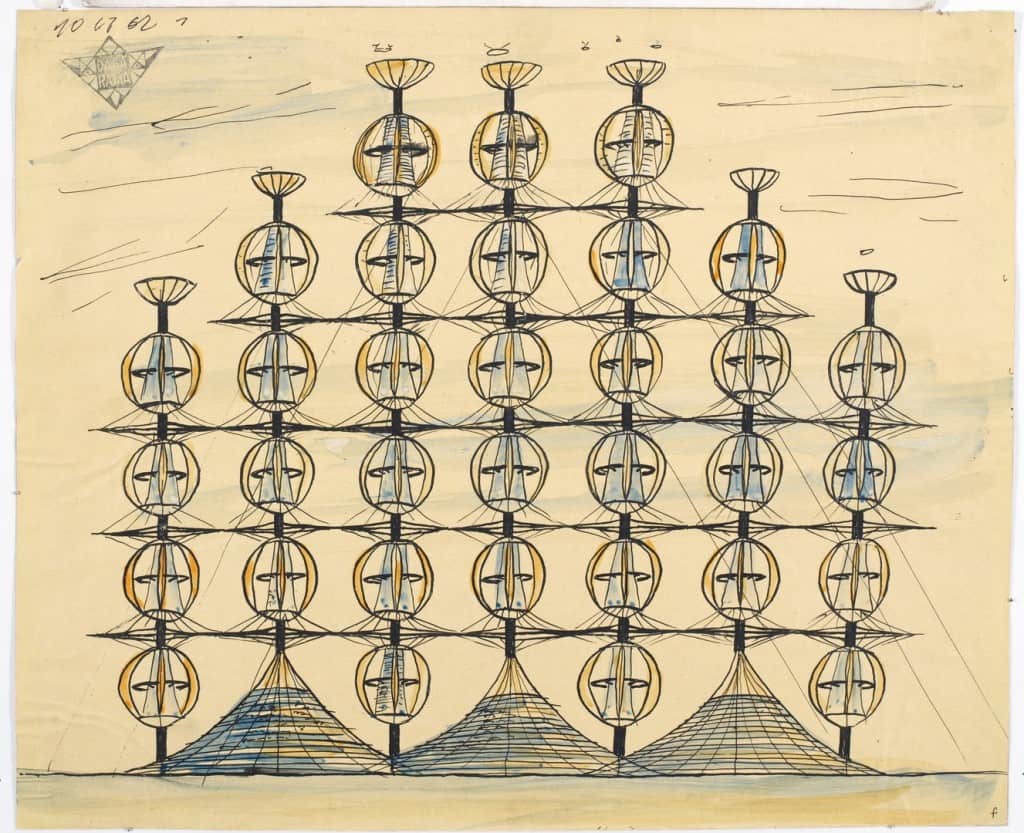This group exhibition focuses on individuals who developed their ideas and practices outside of official institutions and established disciplines. The show features visionary projects by self-taught artists, unlicensed architects, physicists, engineers and inventors. All those eccentrics re-imagined the rules of culture and science. “These brilliant mavericks expand the spaces in which our own imaginative thinking about the world may venture,” says Hayward Gallery Director Ralph Rugoff.
The show includes 12 drawings by Jan Głuszak „Dagarama”. The works of Tarnów-based architect, futurist, poet and philosopher includes plans for monumental buildings designed for both Earth and other planets. His vision was that these buildings could provide shelter for humans in any climatic zone in every corner of the universe. Gluszak’s futuristic vision was both eccentric and utterly practical. He was concerned with finding solutions to global problems such as growth in human population or natural resources depletion. His utopian vision was meant to be a solution for cities like New York, Tokyo or Moscow. He also developed an imaginative, ideal dream-like city, called Humanopolis. Głuszak suffered from schizophrenia. A mental breakdown forced him to terminate his architectural studies at the University of Technology in Krakow. To make a living he worked as a doorman at the local Tarnów Museum while developing further utopian projects. He committed suicide at mental health hospital in Tarnów in 2000. The ingenious works presented at the Hayward Gallery exhibition are loans from the Museum of Architecture in Wrocław.
The exhibition is accompanied by a catalogue featuring an interesting text about Dagarama by Dominik Czechowski, among many other fascinating articles.
The show at Hayward Gallery, Southbank Centre is open until 26 August 2013. Worth a visit.

Exhibition catalogues – Alternative Guide to the Universe, Southbank Centre, London, 2013, photo Slawek Kozdras for Contemporary Lynx

Jan Głuszak Daga rama, Jednostki mieszkalne wysokie nawodne, 1962, Overwater high housing units, Ink on tracing paper, 34 × 49, Muzeum Architektury we Wrocławiu

Jan Gluszak Daga rama, Jednostka mieszkalna wysoka o kulistych przegrodach klimatycznych, 1962, High housing unit with spherical climatic shields, Ink on paper, 35.4 × 42.8, Muzeum Architektury we Wrocławiu

Jan Głuszak Daga rama, Jednostki mieszkalne nawodne, dla terenow zalewowych, 1962
Overwater housing units for, flood areas, Ink on tracing paper, 35 × 42.7, Muzeum Architektury we Wrocławiu
Find our more here:
Jan Głuszak – artistic nickname “Dagarama” born in 1937 in Tarnów. He was an architect, a futurist, a philosopher and a poet. He was a visionary, creator of unique architectural designs. He studied architecture at the University of Technology in Kraków. In 1974, together with Tadeusz Kantor and Maria Pinińska-Bereś, he received an award from Cracovian Art Critics.
Hayward Gallery is one of London’s most important spaces displaying contemporary art. The Hayward Gallery is part of the South Bank Centre – a world-famous arts centre on the South Bank of the Thames. Created in 1951 for the Festival of Britain, Southbank Centre draws on its heritage as a festival site, with art and activities inside and outside.









